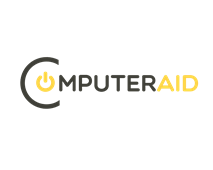
Introduction
Project quality management is a crucial aspect of successful project delivery. It encompasses the processes and activities that ensure a project meets its intended objectives and satisfies stakeholder requirements. At its core, quality management focuses on:
- Defining and maintaining quality standards
- Continuously improving processes
- Preventing defects and minimising waste.
The importance of quality management in project success cannot be overstated. It directly impacts:
- Customer satisfaction
- Team productivity
- Cost-effectiveness
- Overall project outcomes.
Quality management comprises three key processes:
- Quality planning: Establishing quality requirements and standards
- Quality assurance: Implementing processes to meet quality standards
- Quality control: Monitoring and verifying project outputs against standards.
By integrating these processes throughout the project lifecycle, organisations can significantly enhance their project success rates and deliver superior value to stakeholders.
The three pillars of project quality management
Effective project quality management rests on three fundamental pillars: quality planning, quality assurance, and quality control. Each pillar plays a vital role in ensuring project success and delivering value to stakeholders.
1. Quality planning
Quality planning lays the foundation for excellence throughout the project lifecycle. This crucial phase involves:
- Defining project goals and requirements
- Clearly articulate project objectives
- Identify stakeholder expectations
- Establish measurable success criteria.
- Establishing quality standards
- Determine industry-specific quality benchmarks
- Set project-specific quality targets
- Define acceptable tolerance levels.
- Developing a quality management plan
- Outline quality management processes
- Allocate resources for quality-related activities
- Create a timeline for quality reviews and audits.
Quality planning ensures that all team members understand the quality expectations and have a roadmap for achieving them.
2. Quality assurance
Quality assurance focuses on implementing processes to meet established quality standards. Key aspects include:
- Implementing quality processes
- Integrate quality checks into project workflows
- Train team members on quality procedures
- Utilise quality management tools and techniques.
- Conducting audits and reviews
- Perform regular quality audits
- Review project documentation for compliance
- Assess the effectiveness of quality processes.
- Ensuring adherence to standards
- Monitor team compliance with quality procedures
- Address deviations from established standards
- Continuously improve quality processes based on feedback.
Quality assurance provides confidence to stakeholders that the project will meet its quality objectives.
3. Quality control
Quality control involves monitoring project outputs and taking corrective action when necessary. This pillar encompasses:
- Monitoring project output
- Regularly inspect deliverables against quality standards
- Collect and analyse performance data
- Use statistical methods to identify trends and variations.
- Identifying and addressing issue
- Detect quality problems early in the project lifecycle
- Analyse root causes of quality issues
- Develop solutions to prevent recurrence.
- Implementing corrective actions
- Execute approved solutions to quality problems
- Adjust processes to prevent similar issues
- Document lessons learned for future projects.
Quality control ensures that the final project deliverables meet or exceed stakeholder expectations.
By consistently applying these three pillars of project quality management, organisations can significantly enhance their project outcomes, improve customer satisfaction, and achieve long-term success in their project endeavours.
Benefits of effective project quality management
Implementing robust project quality management practices yields numerous advantages for organisations. These benefits extend beyond the immediate project outcomes, positively impacting various aspects of business operations.
Improved product/service quality
Effective quality management ensures that project deliverables consistently meet or exceed predefined standards. This results in:
- Higher-quality products or services
- Fewer defects and errors
- Increased reliability and durability of outputs.
Enhanced customer satisfaction
When projects consistently deliver high-quality results, customer satisfaction naturally improves. This leads to:
- Stronger customer relationships
- Increased likelihood of repeat business
- Positive word-of-mouth referrals.
Increased productivity and efficiency
Quality management processes streamline workflows and reduce waste, resulting in:
- Optimised resource allocation
- Reduced rework and corrections
- Faster project completion times.
Cost savings and financial gains
While quality management requires initial investment, it often leads to significant cost savings:
- Decreased expenses related to defects and rework
- Lower warranty and customer support costs
- Improved project ROI through efficient processes.
Better collaboration and reduced silos
Quality management practices foster a culture of continuous improvement and collaboration:
- Enhanced communication between teams and departments
- Shared responsibility for quality outcomes
- Improved knowledge sharing and best practices.
By embracing effective project quality management, organisations can achieve a competitive edge in their industry. The benefits extend far beyond individual projects, contributing to long-term business success and sustainability. As quality becomes ingrained in organisational culture, it drives continuous improvement across all areas of operation.
Essential quality management tools and techniques
To effectively manage project quality, professionals rely on a variety of tools and techniques. These methods help teams analyse data, make informed decisions, and improve processes throughout the project lifecycle.
Affinity diagrams
Affinity diagrams are visual tools used to organise large amounts of information into logical groups. They are particularly useful for:
- Brainstorming sessions
- Categorising ideas and issues
- Identifying patterns and relationships.
To create an affinity diagram, team members write ideas on cards and group them based on natural relationships. This process helps teams quickly identify common themes and prioritise actions.
Process decision program charts
Process Decision Program Charts (PDPCs) help project teams identify potential problems and develop contingency plans. Key benefits include:
- Visualising complex processes
- Anticipating risks and challenges
- Developing proactive solutions.
PDPCs use a tree diagram structure to map out process steps and potential issues. This allows teams to prepare for various scenarios and improve overall project resilience.
Interrelationship diagrams
Interrelationship diagrams illustrate cause-and-effect relationships between different factors in a complex situation. They are valuable for:
- Identifying root causes of problems
- Understanding system dynamics
- Prioritising areas for improvement.
By mapping out connections between various elements, teams can gain insights into how different factors influence each other and the overall project outcomes.
Prioritisation matrices
Prioritisation matrices help teams make decisions by evaluating options against specific criteria. They are useful for:
- Ranking project tasks or requirements
- Allocating resources effectively
- Making data-driven decisions.
Teams can use weighted criteria to score different options, ensuring that decisions align with project goals and stakeholder priorities.
Network diagrams
Network diagrams visually represent the sequence of project activities and their dependencies. They are essential for:
- Project scheduling
- Identifying critical paths
- Managing task dependencies.
Two common types of network diagrams are arrow diagrams and precedence diagrams. Both help teams optimise project timelines and resource allocation.
Matrix diagrams
Matrix diagrams display relationships between different sets of information in a grid format. They come in various types, each serving specific purposes:
- L-shaped matrix: Shows relationships between two groups of items
- T-shaped matrix: Compares three groups of items, with one group serving as a common basis
- Y-shaped matrix: Analyses relationships between three groups in a circular format
- C-shaped matrix: Examines relationships between three groups in a three-dimensional cube
- X-shaped matrix: Compares four groups of items simultaneously.
Matrix diagrams help teams:
- Identify correlations between different factors
- Analyse complex relationships
- Make informed decisions based on visual data.
By utilising these quality management tools and techniques, project teams can enhance their decision-making processes, improve problem-solving capabilities, and ultimately deliver higher-quality project outcomes. Each tool serves a specific purpose, and the choice of which to use depends on the project’s unique requirements and challenges.
Implementing quality management in projects
Successful implementation of quality management in projects requires a structured approach. This section outlines key steps to integrate quality practices into your project management processes.
Developing a quality management plan
A quality management plan serves as the roadmap for ensuring project quality. To create an effective plan:
- Define quality objectives aligned with project goals
- Outline quality assurance and control processes
- Specify roles and responsibilities for quality management
- Identify necessary resources and tools
- Establish a timeline for quality-related activities.
The plan should be comprehensive yet flexible, allowing for adjustments as the project progresses.
Establishing quality metrics and KPIs
Quality metrics and Key Performance Indicators (KPIs) provide quantifiable measures of project quality. Consider the following when selecting metrics:
- Relevance to project objectives
- Measurability and ease of data collection
- Alignment with industry standards
- Ability to drive improvement.
Examples of quality metrics include defect rates, customer satisfaction scores, and on-time delivery percentages.
Incorporating quality management tasks in project planning
Integrate quality management activities into your project schedule and work breakdown structure. This ensures that:
- Quality tasks receive appropriate resources and attention
- Team members understand their quality-related responsibilities
- Quality activities are synchronised with other project tasks.
Regularly review and update quality tasks as the project progresses to maintain alignment with project goals.
Conducting regular quality reviews and audits
Quality reviews and audits help maintain high standards throughout the project lifecycle. Implement a systematic approach:
- Schedule periodic quality reviews at key project milestones
- Conduct internal audits to assess compliance with quality standards
- Engage external auditors for unbiased assessments when necessary
- Document findings and recommendations from each review or audit
- Implement corrective actions based on review results
By consistently applying these quality management practices, project teams can significantly enhance their ability to deliver high-quality outcomes that meet or exceed stakeholder expectations.
Quality management software and technology
Modern quality management relies heavily on specialised software and technology to streamline processes and improve efficiency.
Benefits of using quality management software
- Centralised data management and analysis
- Real-time monitoring and reporting
- Improved collaboration and communication
- Enhanced traceability and compliance.
Key features to look for in quality management tools
- Customisable workflows and process automation
- Data analytics and visualisation capabilities
- Integration with existing project management systems
- Mobile accessibility for on-the-go quality management.
Examples of popular quality management software
- Workfront: Offers comprehensive project and quality management features
- Jira: Provides robust issue tracking and quality control capabilities
- Microsoft Project: Integrates quality management with project planning tools
- Trello: Offers visual board-based quality management for agile teams.
By leveraging these tools, project managers can significantly enhance their quality management processes, leading to improved project outcomes and stakeholder satisfaction.
Best practices for successful project quality management
Implementing effective quality management requires a strategic approach. Here are key best practices to enhance your project quality management efforts:
Involve stakeholders in quality planning
Engage stakeholders early in the quality planning process to:
- Align quality objectives with stakeholder expectations
- Gain buy-in for quality initiatives
- Leverage diverse perspectives for comprehensive quality planning.
Foster a quality-focused culture
Create an environment that prioritises quality by:
- Recognising and rewarding quality-driven behaviours
- Encouraging open communication about quality issues
- Leading by example in adhering to quality standards.
Continuously improve quality processes
Adopt a continuous improvement mindset by:
- Regularly reviewing and updating quality processes
- Soliciting feedback from team members and stakeholders
- Implementing lessons learned from previous projects.
Provide quality management training for team members
Invest in your team’s quality management skills through:
- Targeted training programs on quality tools and techniques
- Mentoring and coaching on quality best practices
- Encouraging professional certifications in quality management.
Balance quality with other project constraints
Maintain a holistic view of project success by:
- Considering the impact of quality initiatives on time and cost
- Adjusting quality requirements based on project priorities
- Communicating trade-offs to stakeholders for informed decision-making.
By incorporating these best practices, project managers can create a robust framework for successful quality management. This approach ensures that quality remains a top priority throughout the project lifecycle, leading to improved outcomes and increased stakeholder satisfaction.
Conclusion
Project quality management is a critical component of successful project delivery. By implementing the three pillars—quality planning, assurance, and control—organisations can significantly enhance their project outcomes. Key benefits include improved product quality, increased customer satisfaction, and cost savings. Utilising essential quality management tools and following best practices ensures a comprehensive approach to quality. In today’s competitive landscape, effective project quality management is not just a luxury but a necessity. It provides a competitive edge, fosters continuous improvement, and ultimately contributes to long-term business success. By prioritising quality throughout the project lifecycle, organisations can consistently deliver value to stakeholders and maintain a strong market position.
FAQs
What is the difference between quality assurance and quality control?
Quality assurance focuses on preventing defects through process improvement. Quality control involves identifying and correcting defects in project deliverables.
How can I measure the success of my project quality management efforts?
Track key performance indicators such as defect rates, customer satisfaction scores, and process efficiency metrics. Compare these against established benchmarks and project goals.
What are some common challenges in implementing project quality management?
Challenges include resistance to change, lack of resources, inadequate training, and difficulty balancing quality with other project constraints.
How often should quality audits be conducted during a project?
Conduct audits at key project milestones or phases. The frequency depends on project complexity and risk level.
Can project quality management be applied to agile projects?
Yes, quality management principles can be adapted for agile methodologies. Focus on continuous improvement and integrate quality checks into sprint reviews.
What role does the project manager play in quality management?
The project manager is responsible for developing the quality management plan, ensuring its implementation, and fostering a quality-focused culture within the team.
How can I balance quality requirements with budget and time constraints?
Prioritise quality requirements based on their impact on project success. Use risk assessment to determine where to allocate resources for maximum benefit.
Infographic









